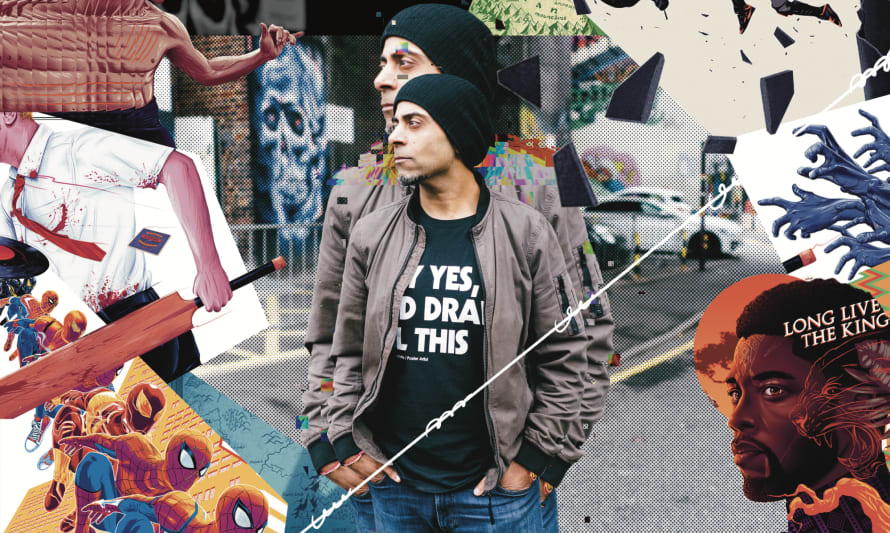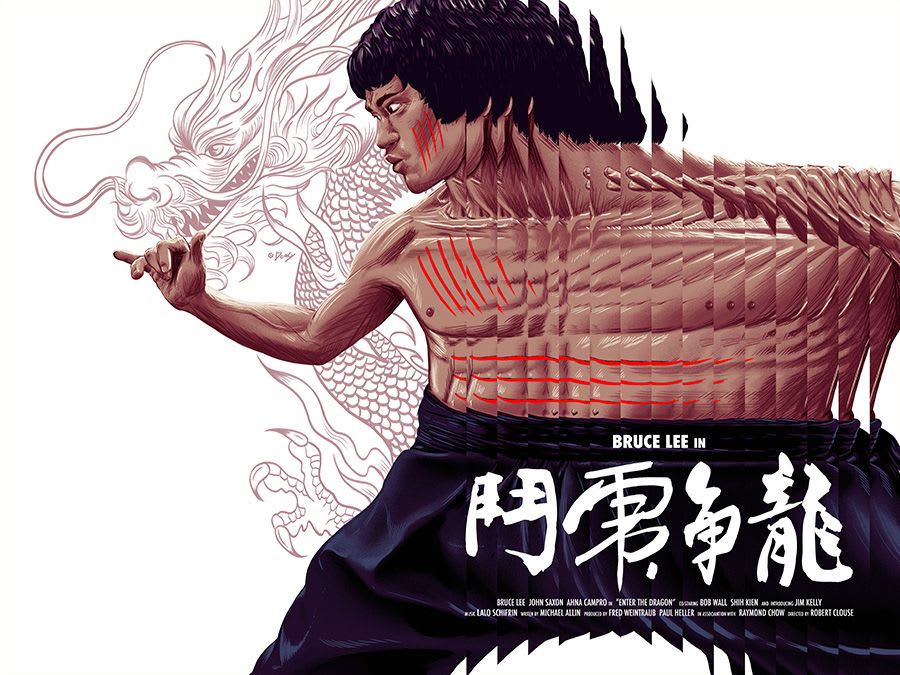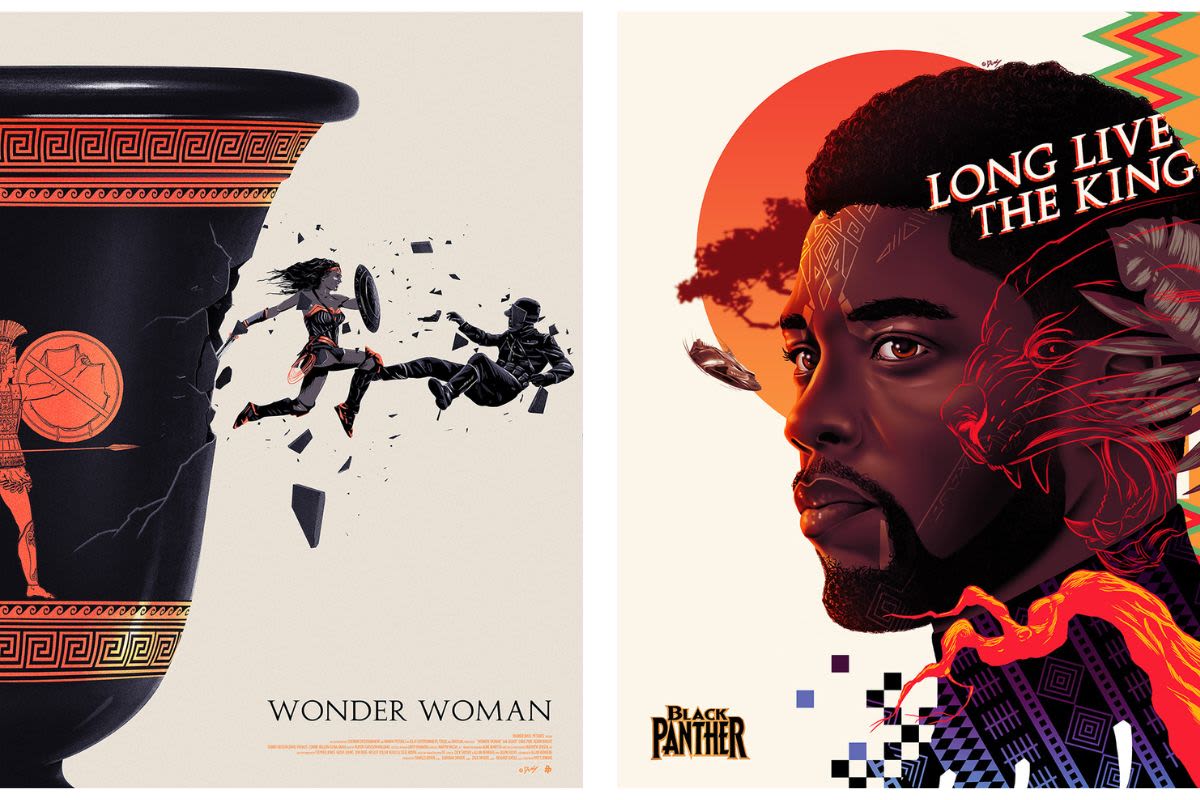
Interview with Doaly
Spaceplay's Habib Ali sat down with Birmingham-born graphic designer and digital illustrator Doaly - best known for his striking poster designs for the likes of Marvel, Disney, Warner Bros and Lucasfilm. A fellow Brummie-born illustrator, Habib chats with Doaly about the influence of his Indian heritage on his work as a poster artist, reflections on going to cinema as a child and Birmingham connections.
You come across as very goal orientated and persistent in acheiving your goals - has this always been the case?
I was diagnosed with dyslexia late in life - having problems with reading and not knowing why meant having to be extra organised. Being goal orientated came from having to make a to-do list. Writing something down, ticking it off and getting it done. I can carry on with what I'm doing on a day to day basis and be really happy with that. But then there’s always the question of okay, I’ve done that, what’s the next challenge to overcome.
In my own work, I get bored quickly. I’m always feeling that itch to create something new and push myself. Doing poster art in the first place, was about getting myself to draw again.
As a child you’d always find me indoors drawing, finding a scrap of paper and something to draw with. Poster art initially came from wanting to get back into drawing for myself outside of the day to day design career I had. The initial goal was getting better at illustration. After a year of getting better at illustration, I said hey let’s combine my two passions of movies and art.
Did you used to go to the cinema as a kid, with your family?
One of my oldest memories is as a toddler and being in the cinema, we went to watch Shaan, classic old movie. I remember playing around in between the seats and between the feet of my parents, only taking in some of the movie but you know, the velvet seats, I have a distinct memory of that happening.
I went a few times with my parents when I was younger, and then I started going again with my brothers when we were early teens and one of the first films we went to by ourselves was Back to the Future II. I remember going to Kings cinema in West Bromwich and this massive line (it felt like a massive line at the time). We queued up for the tickets because there is no way of ordering them beforehand so you have to wait in this long queue trying to get a decent ticket.
Cinema for all of us (I have two older brothers) was a big thing. For my parents it was a big thing because it connected them back to the culture they left behind, back home. My dad especially loved cinema, had his favourite actors, we would have posters of Bollywood films in our bedroom as children, we’d have the latest Hollywood film posters. I thought that was what every family was like, it’s only now I look back at how pivotal, or how movies brought us together as a family and how different that was for some other families.
Pakistan and India are very visual places. The heritage is amazing in terms of the visual culture there. Do you bring any of that into your work?
I think somebody asked me once, what does the work of a British born Indian look like? Why don’t we see more of your culture in your work? You could always say you should push it more towards your heritage, or pull it back and not show as much. But I’ve never looked at myself and said why doesn’t my work look more Asian, or why doesn’t it look more European in design. It is what it is because I am the upbringing of two worlds.
I grew up loving superheroes but I also remember the stories of gods and goddesses, which for me were superheroes at the same time. You hear these amazing stories about miracles taking place and your brain would just connect the two together. People ask me who my favourite superheroes were growing up and my two favourite were Superman and Spider-Man. But actually why is that? You’ve got Superman, a child from another planet, comes to earth and once again he’s the child of two worlds. It directly involves being first generation Indian. Having these two upbringings, you go to school and you come back home and there are two different worlds you’re trying to balance for the first time ever, and there is nobody before you doing it. Even Spidey - a kid coming to terms with these two worlds he’s trying to keep separate, so those things seep into it.
My parents came here with pretty much nothing and they had to work to get everything they have. So when I had my day job when I started this, it was 'do the day job, spend time with the family and then work until 3am at night', trying to carve out this career at the same time. When we would sit down as a family, we’d put on a movie, and generally it would be an Indian movie, and that would be us congregating together after a long day at school or for my dad a long day at work. So the TV would become this fireplace we’d all huddle around. Watch it together, cry together, laugh together and come back together as a family.
We’re known for rich colours and flamboyance from a design point of view and that definitely has slowly, slowly come into my work, there’s this confidence in what I’m doing. I remember when I started a lot of my work was quite monotone from a colour point of view, I was sparing in colour. I was just using a few accent colours and things like that. As I’ve grown in confidence in my work, and you will see in my portfolio, it’s gotten brighter and more colourful.
There’s a book cover I’m working on at the moment and the story is set in India so what I’m drawing is very iconic from that background, but even in something that you wouldn’t necessarily think has that influence, it’s through colour and different things that heritage seeps through.
Growing up in Birmingham, where are some of your favourite places to go in the city?
I’d say many years ago, when I was still studying, it was the city centre, that’s where you would meet up with your friends. It’s changed so much. Palisades and stuff like that existed back then. So you’d walk around with your friends and you would grab a bite to eat and you’d spend basically your entire day just walking around the city centre going from corner to corner. And then later on after university, I worked near the Custard Factory - you were so close to the city centre that you felt part of something. But it had a different vibe definitely, it was a bit more relaxed, there’s the art scene that was going on there, so that whole area was very special to me for a while. And then through work, working in different areas of Birmingham from Solihull to areas like Moseley and Edgbaston, you kind of find somewhere new each time when you spend enough time there.
I was recently at the Custard Factory, and I hadn’t been there in a long time partly because of COVID as well, and it had changed so much, but it was amazing - some of those memories and streets were still as fresh as ever.
This is an extract from a conversation between Habib Ali and Doaly as part of Wonderland, a project exploring Birmingham's Cinema Stories. Doaly's work can be seen as part of the Wonderland exhibition at Birmingham Museum & Art Gallery until 30 October.
Collage Art by Habib Ali.

